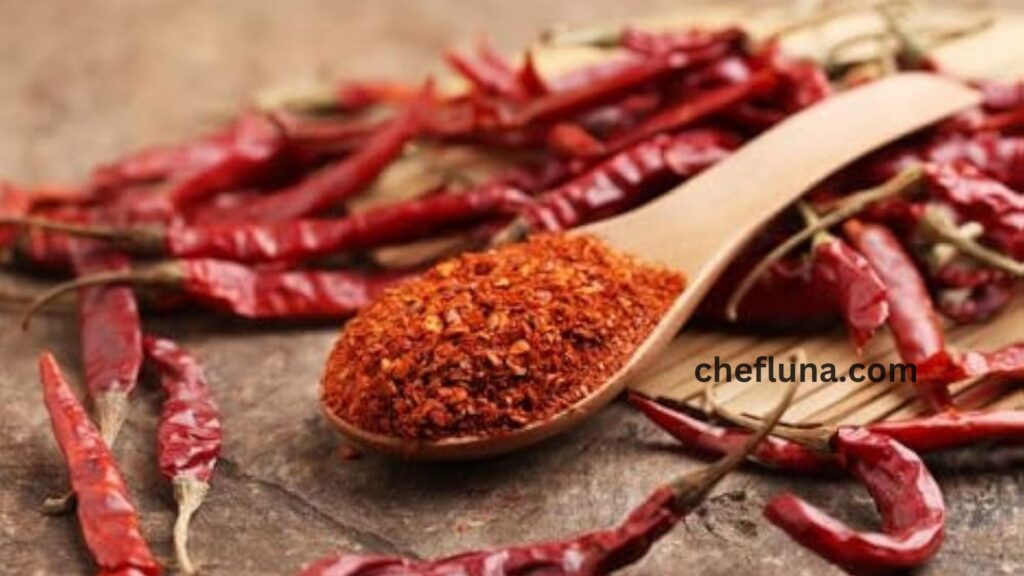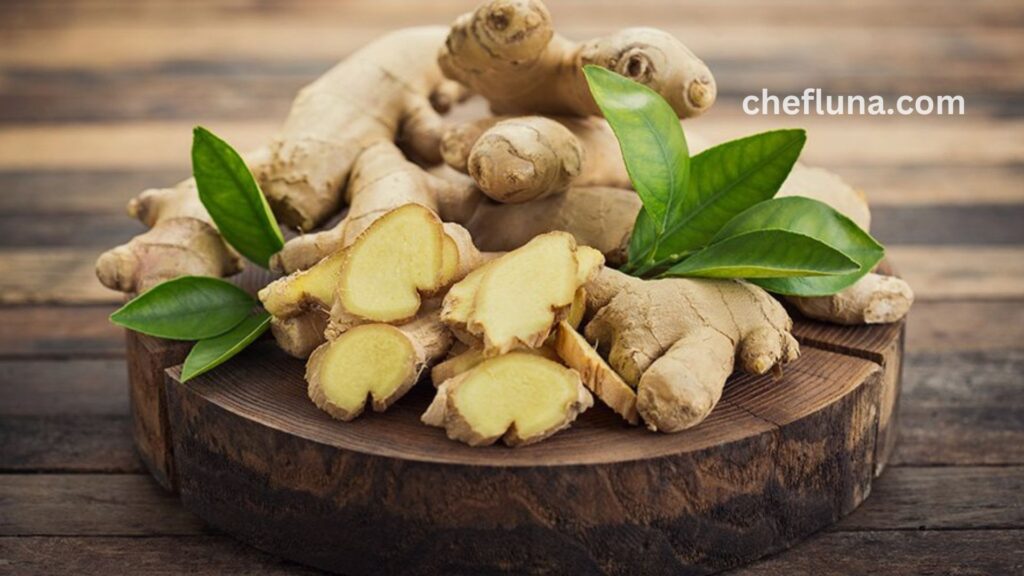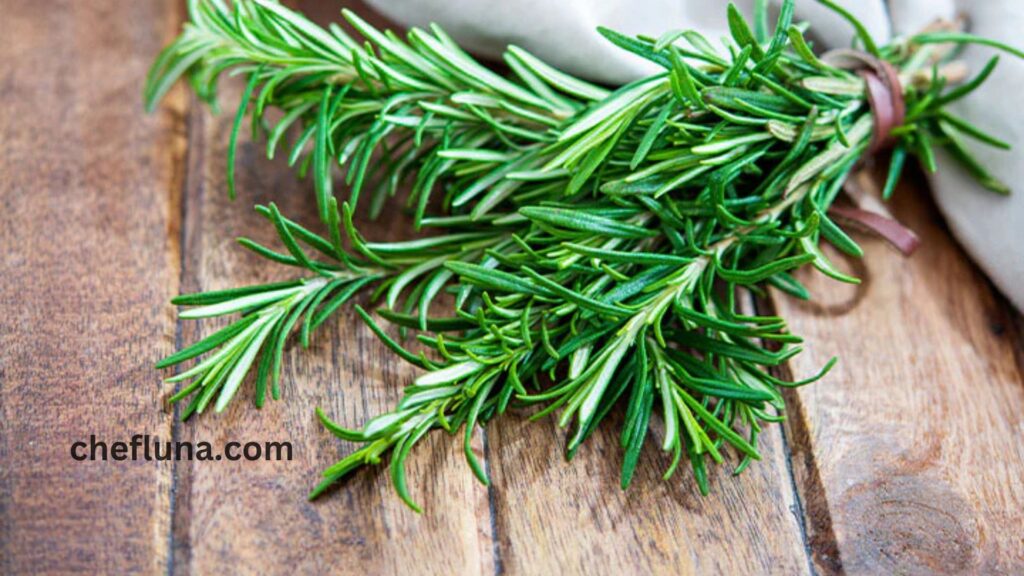How do I Make the Most of Seasonal Herbs in Cooking?
Food always tastes better when it’s properly seasoned. Once you get the hang of using herbs and spices, cooking becomes a lot more fun. Your dishes will taste amazing, smell wonderful, and even impress your friends, family, coworkers, or pets. Yay!
Let me share the seasonings I keep in my kitchen and use often. You don’t need all of these to cook, but I might go a little overboard. 😉
I’ve listed them in alphabetical order so you can easily find what you’re looking for!
Got any tips for using a certain herb or spice, or think I missed one that should be added? Drop a comment below—I’d love to hear your suggestions and collaborate! 😀
(And sorry for the duplicate pictures and the one I borrowed from Wikipedia. Looks like I need to do some shopping. 😉 )
Step 1: Herb Basics
Herbs can be found either fresh or dried, and both work great in cooking! Herbs are the green, leafy parts of plants—things like seeds, bark, or roots are usually considered spices. Some plants can be both, though! Fresh herbs are perfect for garnishing dishes and adding bold flavors. They smell amazing and are great for roasting, sautéing, or chopping into dishes like mashed potatoes—yum!

I’ve had mixed luck growing herbs… except for mint. Mint is super easy to grow! I usually buy fresh herbs and store them in the fridge in a Ziploc bag with a slightly damp paper towel wrapped around the stems. This method has kept parsley, cilantro, and basil fresh for me.
Dried herbs work best when mixed with oil (or butter) or water, so they can really infuse the flavor. To wake them up, crush them with your fingers or sauté them briefly. Using a mortar and pestle is a great way to do this.
When using dried herbs, I tend to use more than the recipe calls for. Dried herbs, especially basil, oregano, and sage, lose a lot of their punch. Rosemary and thyme hold up a little better, though.
And remember—always taste as you cook!
Step 2: Spice Basics
Spices are almost always used dried and can come whole (like peppercorns, nutmeg, cinnamon sticks, or seeds) or ground. They have a lot of variety in flavor and often pack more punch than herbs.
When storing spices and dried herbs, keep them away from air, heat, and sunlight to help them last longer. I keep most of mine in a covered cupboard, but the ones I use often are on the windowsill for easy access.
Guilty confession: I cheat a little here and keep my most-used spices on hand, ready to grab.
Step 3: Allspice
Allspice is available whole (it looks like a big peppercorn) or ground, and you’ll mostly find it ground. It’s similar in flavor to nutmeg, cloves, and cinnamon, but with more of a peppery kick. It works well in both sweet and savory dishes.
I love adding allspice to beef dishes, curry mixes, or anything with apples (like apple muffins!). Just be careful—it’s strong, so start with a small amount and adjust to your taste.
Step 4: Basil
Basil comes fresh or dried, with sweet basil being the most common. Fresh basil has a bold, slightly sweet flavor with a peppery bite, and sometimes even a minty hint.

Fresh basil is tricky to store; once you cut it, you’ve got to be careful. I wrap the stems in a damp paper towel and store the whole bunch in a Ziploc bag in the fridge. Some people freeze it in ice cubes with olive oil too!
I tend to use dried basil more than fresh because it’s easier and often cheaper. When using dried basil, I always use more than the recipe suggests.
Basil pairs great with tomatoes, mild cheeses, and pork. I love it with pork! It’s the star ingredient in pesto and shines in Mediterranean and Asian dishes. Try it chopped into pasta with a little butter or paired with peppers and potatoes for a tasty twist. Here’s a quick recipe I made up on the fly:

Herb Scissors, X-Chef Multipurpose 5 Blade Kitchen Herb Shears Herb Cutter with Safety Cover
X-Chef Herb Scissors feature 5 sharp blades for quick, easy herb cutting, with a safety cover for storage, perfect for kitchen prep.
Red Pepper, Potato, and Onion Home Fries with Basil
- 1 small red pepper
- 3-4 red potatoes, skins on
- 1/2 red onion
- 5-6 basil leaves, chiffonade
- Salt and pepper
- A little olive oil
Chop the potato, pepper, and onion into small cubes. Heat olive oil in a skillet over medium-high heat, then add the potatoes and cook for about 5 minutes until they start browning. Add the pepper, lower the heat, and cook for another 10 minutes, stirring occasionally, until the potatoes are soft. Add the basil, salt, and pepper, toss everything together, and serve hot!
Step 5: Bay Leaves
Bay leaves can be found fresh but are more commonly dried. Fresh bay leaves have a milder flavor, kind of like oregano but stronger. They’re great for flavoring soups, stews, and braised meats, and are a key ingredient in Cuban and French cooking. I always toss one into my dried beans while cooking.
Just remember to remove the bay leaf before serving! They’re not tasty—they’re quite bitter.
Step 6: Cardamom
Cardamom is a sweet, spicy, and incredibly aromatic spice. It’s perfect for adding that extra comforting flavor to your food. There are two main types: black and green, both available ground or in pods. Green cardamom is more common, and it’s easy to find in stores.
While cardamom is best freshly ground, I’ve always used ground cardamom from a can and it works fine. It’s often used in Indian cooking, especially curries, and in desserts like chai-spiced treats.
If you want to try cardamom in a delicious way, check out my recipe for kheer, a rice pudding that’s a total comfort food.
Step 7: Cayenne Pepper, Chiles, Crushed Red Pepper, Chili Powder
I love using these spices to add heat and flavor to my dishes. Cayenne is bright red and super hot—it adds heat more than flavor. Dried red chiles are great for color, flavor, and heat; I just chop them up and throw them into stir-fries, veggie dishes, or beans. Crushed red pepper is a go-to for pasta, sauces, and marinades.

Chili powder has a smoky flavor and is perfect for tacos, chili, and other spicy dishes.
Step 8: Cilantro & Coriander
In the U.S., we refer to cilantro as the leaves and coriander as the seeds (which are usually ground). Cilantro has a bold, citrusy flavor that some people love, while others think it tastes like soap! I use cilantro in salsas, tortilla soups, and curries—it adds balance to sweet ingredients like onion and tomato.
Coriander, on the other hand, is one of my favorites. It’s citrusy and peppery and works well in curries, rubs for pork, and Mexican cooking.

OXO Good Grips Multi-Purpose Kitchen and Herbs Scissors
OXO Good Grips Multi-Purpose Kitchen Scissors with soft handles and durable, sharp blades, ideal for cutting herbs, poultry, and other kitchen tasks.
Step 9: Cinnamon
Cinnamon comes as sticks or ground. It’s sweet, spicy, and aromatic. Cinnamon is great in both sweet and savory dishes, like with apples, beef, chocolate, curries, stews, and baked goods.
I love it with chickpeas and carrots, and it’s a must for flavoring teas and coffees.
Step 10: Cloves
Cloves are strong! You can get them whole or ground, and they have a flavor somewhere between cinnamon and allspice. Whole cloves are great for flavoring broths and meats—just stick them into the food and remove them before serving.

A little goes a long way with cloves, so use them sparingly.
Step 11: Cumin
Cumin has a strong, earthy flavor that’s hard to replicate. It’s great in curries, soups, and stews, especially with beans. You can also sauté cumin seeds in butter or olive oil before adding rice for a delicious side dish.
Step 12: Curry Powder
Curry powder varies a lot, but it usually includes turmeric, cumin, coriander, chili powder, cardamom, cinnamon, ginger, and garlic. It’s great for meats, beans, and veggies. I like to make my own mix, using equal parts cumin, coriander, and chili powder, with half the amount of turmeric, ginger, and cinnamon. It’s perfect for potatoes, cauliflower, and onions.
Step 13: Dill
Dill is best fresh. I used to nibble on it straight from my grandma’s garden! It’s like a tangy, spicy parsley and smells amazing. It goes great with lemon, fish, vinegar, and potatoes. It’s also used in pickling.
Step 14: Ginger
Ginger is sweet, spicy, and a little lemony. You can buy it fresh or ground, and it works well in both sweet and savory dishes. Fresh ginger is great in stir-fries, marinades, cookies, muffins, and curries. Ground ginger is perfect for spice mixes and baking.

A quick tip: When I buy fresh ginger, I chop it up and freeze it. It’s easy to grate when frozen!
Step 15: Mint
Mint is way better fresh than in candy! It’s sweet, strong, and comes in different flavors, from lemony to spicy. Fresh mint is great in drinks, desserts, and savory dishes. It adds a refreshing taste that’s perfect for summer.
Step 16: Nutmeg
You can find nutmeg whole or ground, but it’s better to buy it whole. Alton Brown says so, and we all know we should listen to him! Nutmeg has a strong, sweet flavor and is often used in cheese sauces, pastries, and sweets. Like cloves and allspice, a little bit goes a long way!
Step 17: Oregano
Fresh oregano is amazing, but dried oregano can be just as good if you use enough of it. It’s peppery, aromatic, and earthy. You’ll find it in Mediterranean, Greek, Italian, Mexican, and Cuban dishes. Most of us are familiar with it from pizza and pasta, but it does so much more! It’s great with vegetables, in beef stew, sauces, meats, fish, and beans. I love it with parmesan cheese and white beans. I usually use it dried, especially in my homemade tomato sauce for lasagna. Mix it with lemon, garlic, and olive oil to marinate beef or pork, and you’ll be in food heaven.
Step 18: Paprika
Paprika is that red powder people put on deviled eggs. It can be sweet, hot, or smoky, and it’s used for both flavor and color. It’s essential in making goulash, and also great on roast potatoes, as part of a dry rub, or as a garnish for potato salad or creamy dishes. It’s also tasty in soups and stews.

One tip from TheJovialOne: “Sprinkle it on your hamburgers – either on the raw meat before mixing or on top when grilling. It’s fantastic!”
Step 19: Parsley
Parsley is probably the most common herb, and it comes in curly or flat leaves – I prefer flat. It has a fresh, green taste that works well with spicy or rich foods. It’s also great for adding brightness to soups, stews, and sauces. Parsley is a common garnish too. You can also find it dried. I love using dried parsley in plain white rice. Just add butter, salt, pepper, and a lot of parsley, and you’ve got the way my grandmother used to make rice. Simple but delicious! You can sprinkle parsley on almost anything: curries, tomato-based dishes, lemony or garlicky meals, and even fish. Plus, it stays fresh in the fridge for weeks if you use the damp paper towel and ziplock bag trick. A $2 bunch of parsley can really make your meals better!

Chef’sChoice 15 Trizor XV EdgeSelect Professional Electric Knife
Chef’sChoice 15 Trizor XV EdgeSelect Electric Knife Sharpener delivers precision sharpening for a razor-sharp edge, ideal for professional chefs and home cooks alike.
Step 20: Pepper
Pepper comes as peppercorns or ground. I’m a bit of a pepper snob and believe in using lots of freshly ground, chunky pepper on everything. I only use tellicherry peppercorns because they’re fruity, warm, and complex. You can also find pink, green, white, or black peppercorns, or even mixed ones. Black pepper is the most common, with white pepper being a slightly milder version. Green peppercorns are often pickled and sold in small jars, but they can also be found dried. Don’t even get me started on pre-ground pepper. SHAME on you if you use it!
Step 21: Rosemary

Rosemary is great both fresh and dried. Fresh rosemary has a strong pine flavor, but dried can be a little tough and woody to bite into, so I crush it with my fingers before using it. Fresh rosemary is fantastic in soups, stews, or stuffed inside poultry while cooking. It’s also great on the grill or with potatoes (especially gnocchi – rosemary and butter with gnocchi is amazing). Rosemary pairs well with root vegetables and is perfect with sea salt.
Step 22: Saffron
Saffron is the most expensive spice, but you only need a tiny pinch. A small tin can last a while. It adds a lovely bitterness that balances sweet or acidic flavors. When added to cooking liquid, saffron turns dishes a bright yellow. It’s often used with fish, rice, and in paella. It’s also good with chickpeas and chicken. I don’t recommend buying saffron in powdered form because it’s easy to get tricked by fake saffron mixes.
Step 23: Sage
Sage is available both fresh and dried. Fresh leaves are dark green, fuzzy, and very earthy. Dried sage is usually rubbed or in whole leaves. Sage has a strong flavor, so be careful not to overdo it. It’s great with poultry, cheese, and vegetables. Fresh sage leaves are delicious when fried in a bit of olive oil or butter. One of my favorite recipes is sage gnocchi!
Also Read: How do I Plan a Seasonal Menu for Dinner Parties?
Step 24: Thyme
Thyme is usually available dried, though you can also find it fresh. It has a flavor similar to rosemary but a bit softer. You can even find lemon-flavored thyme! Like rosemary, thyme works wonders with root vegetables and is also great in butter sauces. It’s commonly used in a French bouquet garni and pairs well with beans, especially those with lots of onion.
Step 25: Turmeric
Turmeric is a deep orange spice with a bitter, slightly spicy flavor. It’s often used in curry powders and gives soups and stews a beautiful color. Turmeric is sometimes used as a substitute for saffron and also works as a natural food coloring or dye.

Post Comment